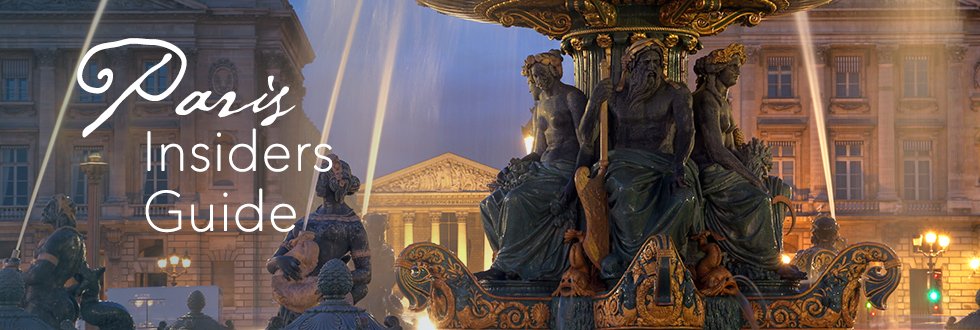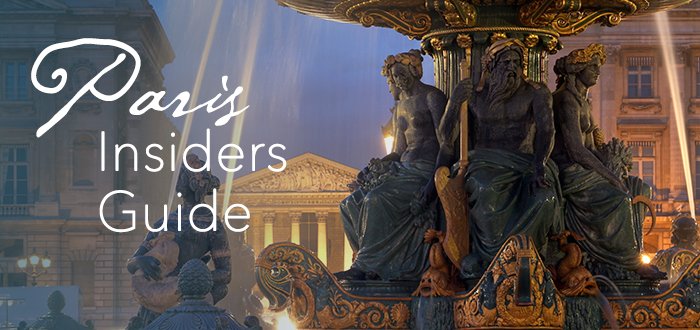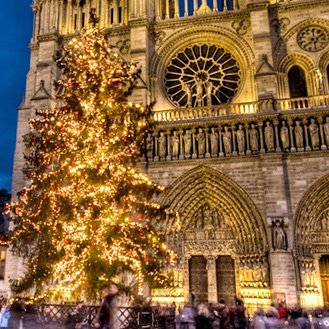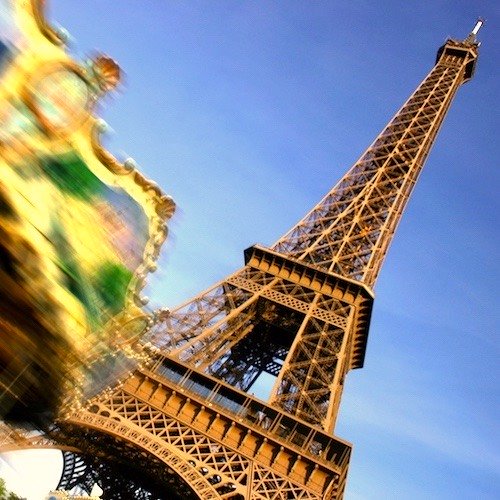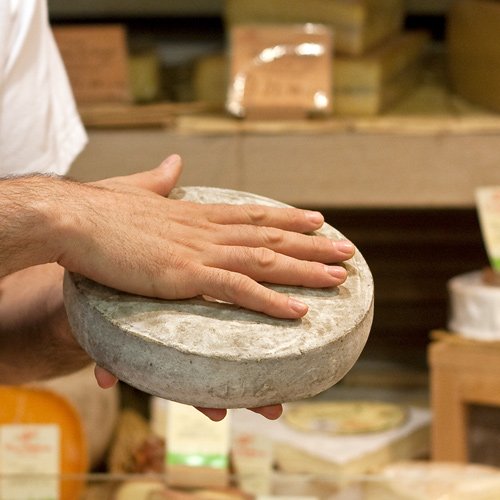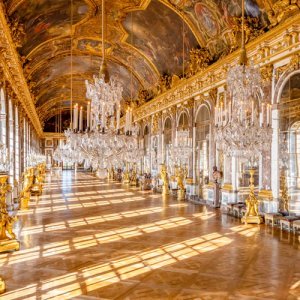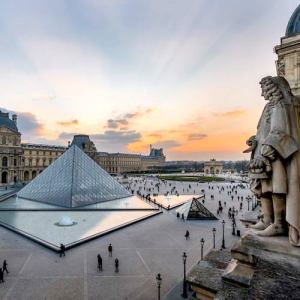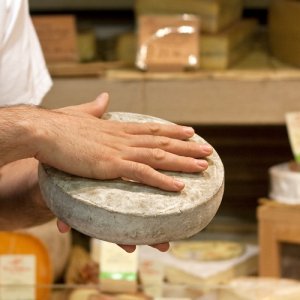Montparnasse Cemetery Paris — A Walk Through Quiet Grandeur
Tucked behind the rush of the Montparnasse quartier lies a place few stumble upon without intent — Montparnasse Cemetery Paris, a peaceful patch of history layered in ivy, stone, and quiet rebellion. Unlike Père Lachaise cemetery, which often steals the spotlight, Montparnasse invites a slower kind of reverence. Here, poets, philosophers, and provocateurs lie in artfully aging repose, framed by leafy paths and a kind of hush that only comes from 200 years of silence.
For visitors seeking a richer sense of place — beyond the famed museums and busy boulevards — Montparnasse Cemetery Paris delivers. It's a time capsule, yes, but also a showcase of wit, intellect, and art. From the gravestone of a legendary songwriter scrawled with lipstick tributes to sculptural gems hidden in plain sight, this is where history shows its personality.
![]()
Our Top-Rated Seine River Cruises
1. VIP Dinner Cruise with Champagne & Live Music… Our top-rated nighttime activity
2. Champagne Cruise Along the Seine… Get on board the boat with the bubbly
3. Dinner Cruise by Maxim's of Paris… Celebrating the Belle Époque bistro
4. Seine River Lunch Cruise… With spectacular views outside your window
The History of Montparnasse Cemetery Paris
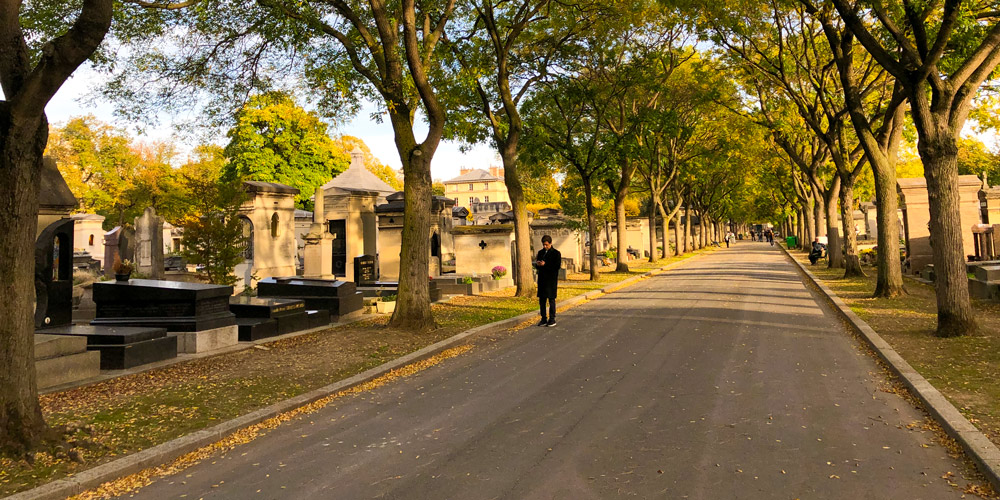 A tree-lined lane at Montparnasse Cemetery, photo by Mark Craft
A tree-lined lane at Montparnasse Cemetery, photo by Mark Craft
The story of Montparnasse Cemetery Paris reflects how the city has always negotiated space — between the living and the dead, the modern and the ancient. Before Haussmann's grand redesigns and before the Left Bank was crowded with cafes and bookstores, this spot was the rural edge of the city. Windmills creaked in the breeze, cows grazed, and it was far enough from the dense, medieval quarters to be peaceful. Too peaceful, in fact, for a city growing by the day.
By the early 19th century, the old Parisian cemeteries — like the overcrowded one near Les Halles — were closed. The air was bad, the risk of disease worse, and something had to give. The city established several large cemeteries outside the core — Père Lachaise to the east, Montmartre to the north, Passy to the west, and Montparnasse to the south. It was an administrative solution, but it quickly became something more.
Montparnasse was a natural fit for writers, philosophers, scientists, and musicians. The 14th arrondissement was affordable and bohemian. As the Left Bank attracted waves of intellectuals and artists, many of them chose Montparnasse for their final rest. Over time, the cemetery became a map of Parisian cultural memory, its granite and marble etched with the names of those who helped define French thought, literature, and art.
The Moulin de la Charité, a 15th century windmill, now silent and preserved, still stands within the walls. It serves no purpose now beyond quiet symbolism — a remnant of a time before Paris pushed its boundaries southward. It reminds visitors that change is constant, and yet somehow, Montparnasse keeps its sense of place.
![]()
Discover What's On When You're Here...
• January... |
• February... |
• March... |
• April... |
• May... |
• June... |
• July... |
• August... |
• September... |
• October... |
• November... |
• December... |
Discover What's On When You're Here
• January...
|
• February... |
• March... |
|---|---|---|
• April... |
• May... |
• June... |
• July... |
• August... |
• September... |
• October... |
• November... |
• December... |
Famous Graves Found at Montparnasse Cemetery
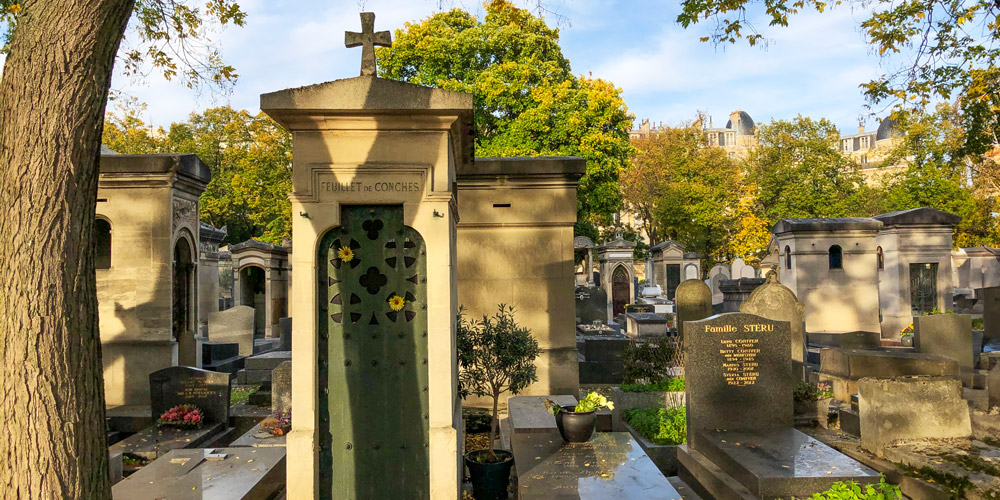 The family tomb of Feuillet de Conches, French diplomat and writer, photo by Mark Craft
The family tomb of Feuillet de Conches, French diplomat and writer, photo by Mark Craft
If there's a reason many seek out Montparnasse Cemetery Paris, it's this: the names etched into the headstones here shaped thought, art, and culture. You're walking past legacies — some boisterous, some quiet.
At the front of the cemetery lie Jean-Paul Sartre and Simone de Beauvoir, buried side by side in a grave often covered in lipstick kisses and Metro tickets, left by admirers. Charles Baudelaire's grave — technically a cenotaph — is nearby, its base wrapped in pens and poems.
The grave of French chanteur Serge Gainsbourg draws a more eclectic crowd. You'll find it cluttered with offerings — Gauloises cigarettes, love notes, graffiti scratched into the stone. It feels less like mourning and more like mischief, which seems just about right.
Other famous graves in Montparnasse Cemetery Paris include Samuel Beckett, whose headstone is austerely quiet, and Marguerite Duras, whose pot of pens sits like a silent nod to the writing life.
- Jean-Paul Sartre (1905-1980) and Simone de Beauvoir (1908-1986): Renowned existentialist philosophers and writers, buried together in a shared grave.
- Charles Baudelaire (1821-1867): Poet best known for Les Fleurs du Mal. His grave also features a cenotaph.
- Guy de Maupassant (1850-1893): French writer celebrated for his short stories.
- Marguerite Duras (1914-1996): Acclaimed novelist and filmmaker, author of The Lover.
- Eugene Ionesco (1909-1994): Romanian playwright and pioneer of avant-garde theater.
- Constantin Brancusi (1876-1957): Romanian sculptor, known for his iconic work The Kiss.
- Frederic Auguste Bartholdi (1834-1904): Designer of the Statue of Liberty.
- Antoine Bourdelle (1861-1929): French sculptor, famous for his monumental works.
- Serge Gainsbourg (1928-1991): Iconic French musician, songwriter, and filmmaker.
- Camille Saint-Saëns (1835-1921): Renowned composer of Carnival of the Animals and Danse Macabre.
- Michele Morgan (1920-2016): Celebrated French actress.
- Jacques Demy (1931-1990): French filmmaker known for The Umbrellas of Cherbourg.
- Henri Poincaré (1854-1912): Mathematician and physicist.
- Alfred Dreyfus (1859-1935): French Jewish military officer famously involved in the Dreyfus Affair.
- Susan Sontag (1933-2004): American writer and critic who spent much time in Paris
The Best Paris Activities
The Top Paris Activity
Art in Stone – Sculptures and Gravestones
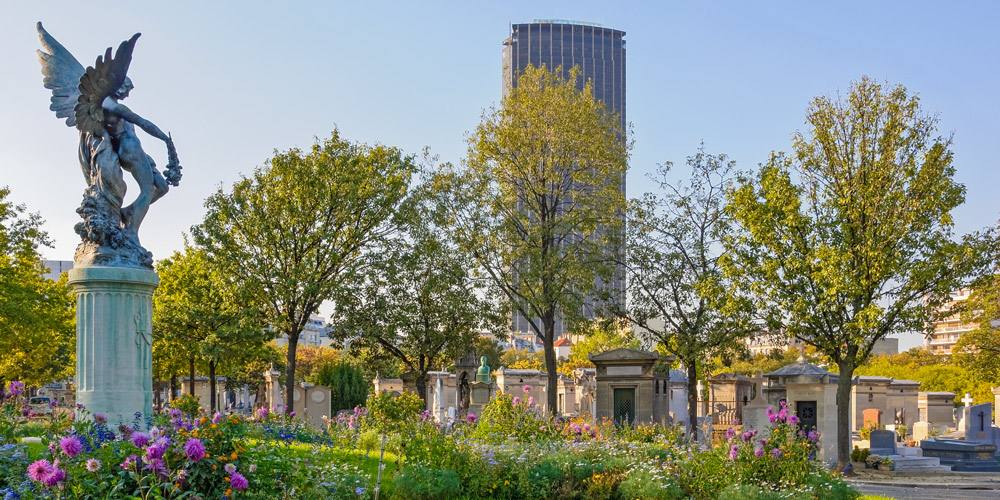 An 1889 bronze statue by Horace Daillion at Montparnasse Cemetery, photo Wikimedia by Myrabella
An 1889 bronze statue by Horace Daillion at Montparnasse Cemetery, photo Wikimedia by Myrabella
Walk a little deeper and you'll begin to see what sets Montparnasse apart: funerary art that doesn't follow the rules. It feels personal, sometimes cryptic, occasionally strange — but always compelling.
One of the most striking is The Kiss by Constantin Brancusi, a block of limestone with two abstracted figures in eternal embrace. There's no plaque, no explanation. Just form and feeling.
Nearby, a bright mosaic cat sits playfully atop a modest grave. Created by Niki de Saint Phalle for her friend Ricardo Menon, it's impossible not to smile when you see it — sorrow, lightened by color.
Then there's the Génie du Sommeil Éternel, the Angel of Eternal Sleep, sculpted by Horace Daillion. With wings unfurled and eyes forever closed, it's a classical counterpoint to the modern expressions scattered throughout the grounds. Together, these works make the cemetery feel less like a grid of stone and more like an open-air museum.
![]()
Find Hotel Deals for Your Dates in Paris
Check the complete list of Paris hotels to find current sale prices on rooms in every arrondissement. Save 10%, 20%… or even more! |
Paris Hotel Deals |
Find Hotel Deals for Your Dates in Paris
Save on hotels in every arrondissement of Paris – the Latin Quarter, Saint Germain, the Right Bank, the Marais, near the Eiffel Tower. Save 10%, 20%… or even more! |
Historical Memorials in Montparnasse Cemetery
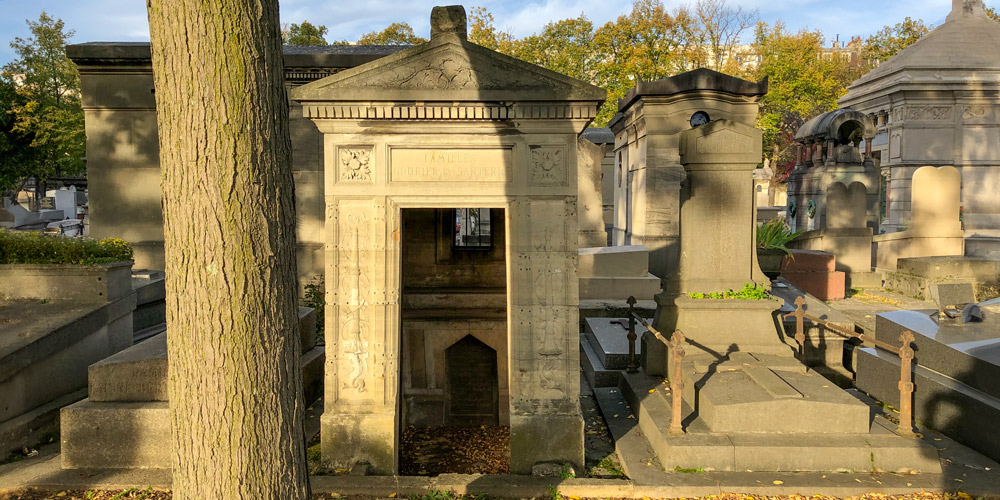 The open tomb of the Goufier and Santerre families at Montmartre Cemetery, photo by Mark Craft
The open tomb of the Goufier and Santerre families at Montmartre Cemetery, photo by Mark Craft
History doesn't sit quietly here — it's carved into the landscape. Several monuments in the cemetery commemorate national trauma and collective grief. A memorial to the Paris Commune reflects the turbulent 19th-century politics that shaped the France we know now.
Divisions 5 and 30 contain Jewish enclosures, set apart with subtle dignity. Here, engraved names speak volumes, with some tombs memorializing entire families.
One of the more quietly powerful graves belongs to Alfred Dreyfus, the army officer at the center of a political scandal that shook France at the turn of the 20th century. His headstone, modest in form, carries the weight of a story that rewrote national conscience.
![]()
Experience the Splendor Of Versailles
|
Versailles with Priority Access + Gardens |
Half-Day, Skip-the-Line Tour of Versailles |
|
Versailles with Priority Access + Gardens |
Green Avenues and Gentle Stillness
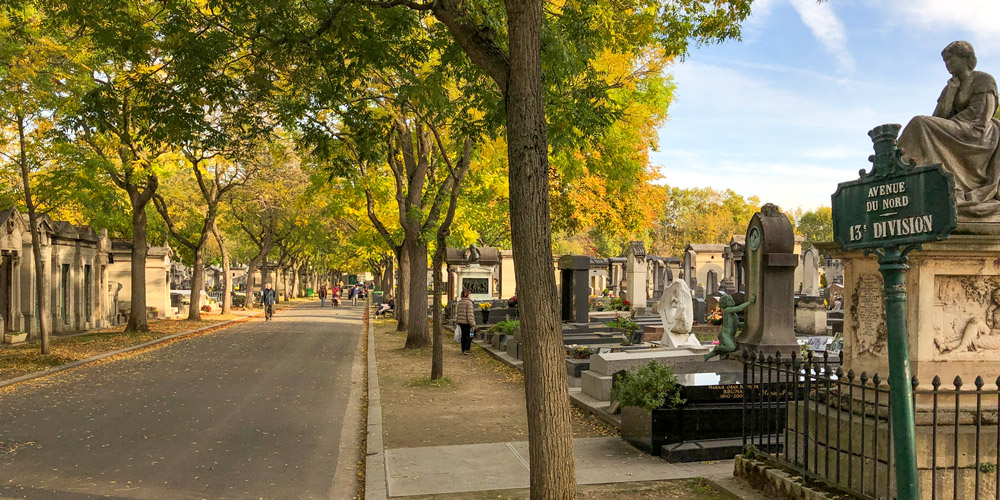 Another tree-lined lane at Montparnasse Cemetery Paris, photo by Mark Craft
Another tree-lined lane at Montparnasse Cemetery Paris, photo by Mark Craft
Despite its status as a burial ground, visiting Montparnasse Cemetery doesn't feel morbid. Its wide paths are shaded by trees — ash, maple, chestnut — and the air carries a softness not often found in the heart of a city.
Birdsong filters in from the branches. Cats stretch out on sunlit slabs. The occasional visitor wanders through, map in hand, pausing at names they recognize, then names they don't. There's space to sit, to reflect, to simply walk without urgency.
If you come here expecting something somber, you'll find something quieter instead — an atmosphere that feels less about endings and more about endurance.
A Montparnasse Cemetery Guide for Visitors
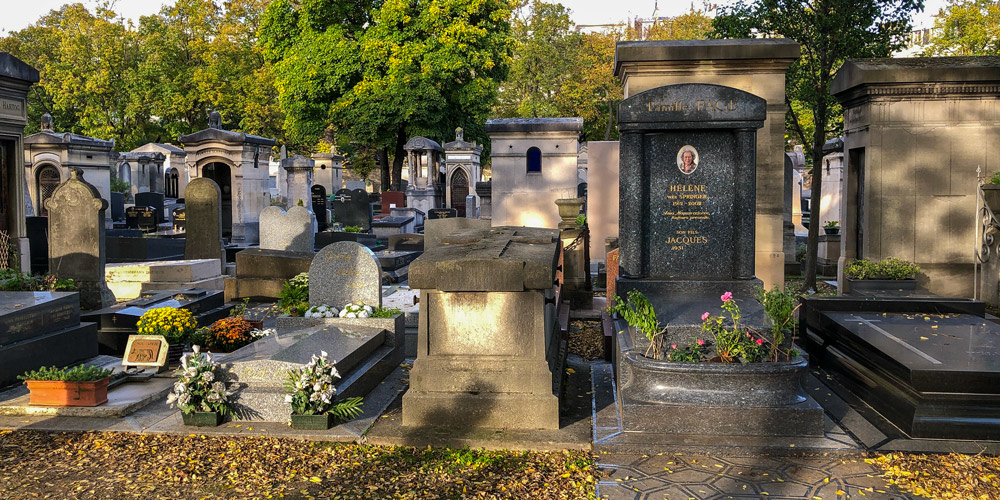 A few of the graves at Montparnasse Cemetery, photo by Mark Craft
A few of the graves at Montparnasse Cemetery, photo by Mark Craft
For a first-time visit, start at the main entrance on Boulevard Edgar Quinet. Here, you'll find a map of major graves — worth grabbing, unless you enjoy the sport of searching.
Make your way to Sartre and de Beauvoir, just a few minutes from the gate, then follow the paths into the deeper sections. Keep an eye out for the Petit Cimetière, a smaller section often missed but home to graves like Camille Saint-Saens and André Citroën.
Don't be afraid to wander. Some of the most compelling tombs belong to people you've never heard of — marked with weeping angels, sculpted books, or carved musical scores.
This is not a place to rush through. Give it time, and it will quietly impress you.
![]()
Find Hotel Deals for Your Dates in France
Check with Booking.com to find today's sale prices on hotel rooms in every village & city in France. Save 20% to 30%… or even more! |
Booking.Com France Hotel Deals |
Find Hotel Deals for Your Dates in France
Booking.Com France Hotel Deals |
Nearby Places Worth Visiting
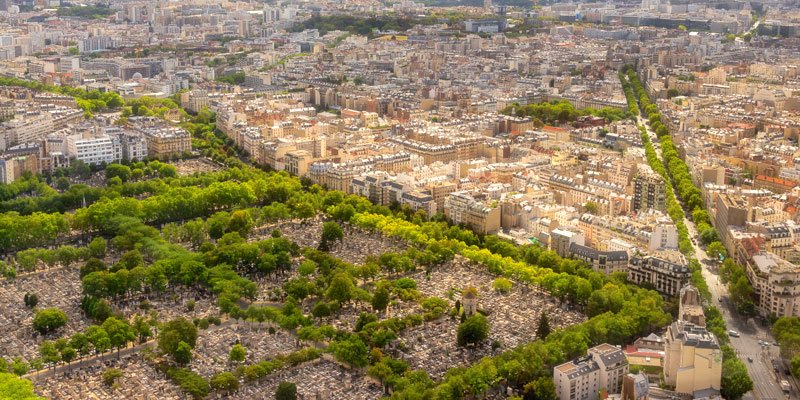 Montparnasse Cemetery as seen from Tour Montparnasse, photo by Mark Craft
Montparnasse Cemetery as seen from Tour Montparnasse, photo by Mark Craft
After walking the quiet lanes of the cemetery, you might find it jarring to reenter the energy of modern Montparnasse — but that contrast is part of what makes this area compelling. The neighborhood doesn't shy away from layering memory and momentum.
Start with a visit to the Tour Montparnasse. As much maligned as it is tall, it rises like a slab from the cityscape, but the view from the top is one of the best in Paris. From up there, you'll see the city unfold in every direction — spires, rooftops, and boulevards framed by the Seine and sky. And notably, it's the only view in Paris where you won't see the Montparnasse Tower itself. That alone might be worth the ticket.
Back on the ground, the spirit of the old neighborhood lingers in its cafes and brasseries, many of which once hosted the very writers and artists now buried nearby. La Coupole, Le Dôme, and La Rotonde were regular haunts of Picasso, Sartre, Beauvoir, and Hemingway. They're less edgy now — more polished, more expensive — but sit there long enough and you'll feel something familiar in the clatter of cutlery and quiet conversations.
If you have time to spare, Rue de la Gaité offers a string of small theaters and music venues. It's less polished than the Left Bank's famous boulevards, but more alive in some ways. It reminds you that Montparnasse isn't frozen in time. It's still creating, still performing — still very much part of Paris.
Paris Planning Guides
 VIP to Champagne
VIP to Champagne |
 10 Food Experiences
10 Food Experiences |
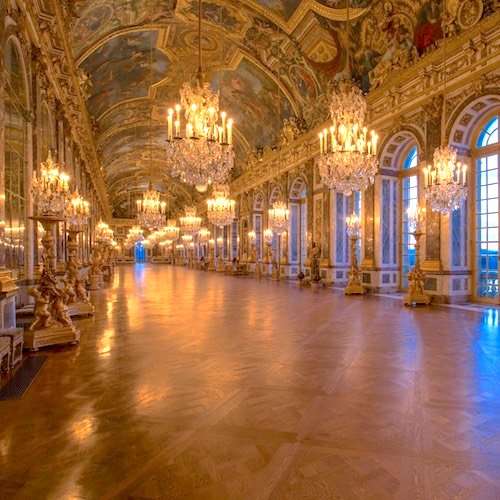 Visiting Versailles
Visiting Versailles |
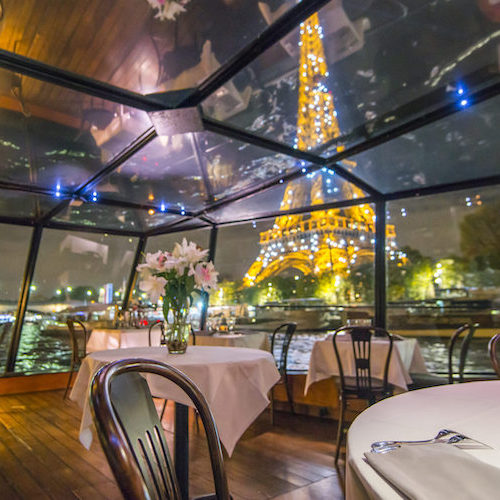 Glorious Dinner Cruises
Glorious Dinner Cruises |
